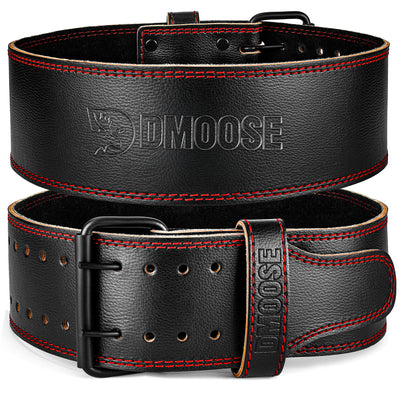You're putting in the hours at the gym, sweating through brutal workouts, and pushing your limits…but your progress has stalled.
Why? Because you might be following training advice that’s flat-out wrong. What if everything you believed about muscle growth, intensity, and cardio was actually holding you back?
That’s why we’re turning to Eugene Teo, a trusted fitness expert known for cutting through the noise with science-backed insights.
Inspired by the insights from the video below, we’ll expose the biggest myths that could be ruining your training and show you smarter ways to maximize your muscle growth and strength gains.
The Biggest Fitness Myths That Are Sabotaging Your Gains
It’s frustrating when you give your best effort day after day, yet the results just don’t seem to match the work you’re putting in. You might think that pushing yourself harder is the answer, but what if that’s actually making things worse?
The problem isn’t your effort; it’s the outdated training myths that keep you from progressing. Let’s check out 5 fitness myths below.
Myth #1: More Muscle Damage Equals More Muscle Growth

Many people believe that pushing their muscles to extreme fatigue through techniques like pre-exhaustion, drop sets, and force reps is the best way to grow. However, the reality is different.
Eugene Teo says that when you first start training, your body experiences more muscle damage, but most of your muscle protein synthesis goes into repairing that damage rather than building new muscle. Over time, less damage allows your body to focus more on muscle-building rather than just recovery.
The Right Approach for Maximum Gains
- Focus on stimulating muscle growth rather than breaking down muscle fibers excessively.
- Stick to hard sets with maximum effort instead of chasing unnecessary fatigue.
- Utilize progressive overload wisely to stimulate adaptation.
- For better control during workouts, using DMoose Lifting Hooks can help maintain a strong grip, reducing unnecessary forearm fatigue and allowing you to focus on working the target muscle effectively.

Related Article: 8 Ways to Relieve Muscle Soreness After Exercise
Myth #2: Slow Reps Are Always Better for Muscle Growth

Eugene Teo suggests that controlled movements are essential for proper technique, but slowing down every rep isn’t necessarily more effective.
If weight is light enough for you to deliberately slow down, it may not be challenging enough to activate high-threshold motor units, the ones that contribute the most to muscle growth.
When Slow Reps Work and When They Don’t
- Good for: Injury prevention, learning new movements, or working around joint pain.
- Not essential for: Every lift, especially compound movements, where explosive power is beneficial.
If you want to maximize muscle activation, using the DMoose Wrist Roller is a great way to build forearm and grip strength, which plays a crucial role in lifting heavier loads with better control.

Related Article: High Reps Vs. Low Reps for Muscle Growth & Strength
Myth #3: Cardio Kills Your Gains

According to Eugene Teo, one of the oldest myths in fitness is that cardio will burn away muscle. The truth? Cardio, when done strategically, enhances recovery, improves endurance, and boosts overall performance.
How to Incorporate Cardio Without Losing Muscle
- Separate cardio from strength training, do it on different days or post-workout.
- Choose lower-impact options like cycling or elliptical workouts to minimize joint stress.
- Monitor recovery; if your strength stalls, adjust your cardio accordingly.
Using a DMoose Jump Rope is an excellent way to add low-impact conditioning work to your routine without excessive stress on the body.
Related Article: What Is Steady-State Cardio? All You Need to Know
Myth #4: You Must Add Weight Every Workout to Make Gains

Many believe that progressive overload means adding weight or reps every single session. In reality, strength gains happen gradually as your body adapts. Instead of forcing heavier loads each week, focus on consistency, technique, and small improvements over time.
Practical Progressive Overload Strategies
- Use rep ranges (e.g., 6-12 reps). Start at the lower end and add reps before increasing weight.
- Improve form and control before prioritizing heavier loads.
- Track performance over months, not just weeks.
Myth #5: There’s a Perfect Technique for Everyone

Many people chase the “perfect” lifting form, but in reality, the best technique varies based on individual body structures. Factors like limb length, mobility, and muscle insertions all influence how you should execute movements.
Finding the Best Form for You
- Adjust stance, grip, and bar position based on comfort and mobility.
- Focus on maximizing the range of motion while minimizing joint strain.
- Train consistently to improve movement efficiency over time.
Related Article: 10 Gym Hacks and Tricks for Bigger and Stronger Muscles
FAQs
1. Does Post-Workout Muscle Soreness Indicate a Good Workout?
Not necessarily. While muscle soreness (DOMS) is common, it isn’t a reliable indicator of an effective workout. Soreness often results from novel exercises, excessive volume, or eccentric-heavy movements rather than muscle growth. Effective training should focus on progression and recovery, not just how sore you feel the next day.
2. How Does Sleep Impact Muscle Growth and Recovery?
Sleep is one of the most overlooked aspects of muscle recovery. Growth hormone is released during deep sleep, aiding in muscle repair and protein synthesis. Poor sleep can lead to increased cortisol levels, slower recovery, and impaired strength gains. Aim for 7-9 hours of quality sleep for optimal muscle growth.
3. Is It Bad to Train the Same Muscle Group Multiple Days in a Row?
It depends on intensity and volume. High-intensity training on consecutive days without sufficient recovery can lead to overuse injuries and hinder progress. However, lower-intensity, higher-frequency training (like full-body workouts) can be effective if volume and recovery are managed properly.
4. Can You Build Muscle With Lighter Weights?
Yes, as long as you train close to failure. Studies show that lifting lighter weights for higher reps (15-30) can still stimulate muscle growth if taken to near failure. The key is to maintain intensity and ensure the muscles are challenged sufficiently, regardless of weight.
5. Why Do Some People Gain Muscle Faster Than Others?
Genetics play a role in muscle growth due to differences in muscle fiber composition, hormone levels (like testosterone), and recovery ability. While genetics set a baseline, factors like nutrition, consistency, progressive overload, and training intensity have a much greater impact on long-term muscle gains.
Conclusion: Train Smarter, Not Harder
Falling for fitness myths can keep you stuck in a frustrating cycle of minimal progress and potential injuries. Instead, take a strategic approach. Train efficiently, focus on recovery, and use science-backed methods to drive real results.
Enhancing your performance doesn’t just come from working harder but from working smarter with the right tools. Using DMoose products like Lifting Hooks, Wrist Rollers, Weightlifting Belts, and Barbell Squat Pads can help you train more effectively, minimize injury risk, and optimize your gains.
So ditch the myths, equip yourself with the right gear, and start making real, measurable progress in your fitness journey.











